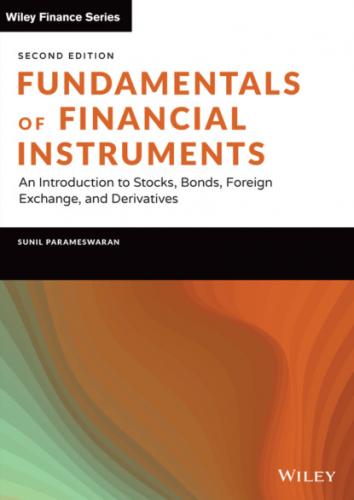The solution to this equation is termed as the Internal Rate of Return. It can be obtained using the IRR function in EXCEL. In this case the solution is 11.6106%.
Note 5: A Point About Effective Rates
Let us assume that we are asked to compute the present value or future value of a series of cash flows arising every six months, and are given a rate of interest quoted in annual terms, without the frequency of compounding being specified. The normal practice is to assume semiannual compounding. That is, we would divide the annual rate by two to determine the periodic interest rate for discounting or compounding. In other words, the quoted interest rate per annum will be treated as the nominal rate and not as the effective rate.
EXAMPLE 2.15
Consider the series of cash flows depicted in Table 2.5. Assume that the annual rate of interest is 8%.
TABLE 2.5 Vector of Cash Flows
| Period | Cash Flow |
|---|---|
| 6 months | 2,000 |
| 12 months | 2,500 |
| 18 months | 3,500 |
| 24 months | 7,000 |
The present value will be calculated as
Similarly the future value will be
However, if it were to be explicitly stated that the effective annual rate is 8%, then the calculations would change. The semiannual rate that corresponds to an effective annual rate of 8% is
Similarly, the future value will then be given by
The present value is higher when we use an effective annual rate of 8% for discounting. This is because the lower the discount rate, the higher will be the present value; obviously, an effective annual rate of 8% is lower than a nominal annual rate of 8% with semiannual compounding. Because the interest rate that is used is lower, the future value at the end of four half-years is lower when we use an effective annual rate of 8%.
In this case, if we were to calculate the IRR for the given cash flow stream, we would get a semiannual rate of return. We would then have to multiply it by two to get the annual rate of return. The IRR for this cash flow stream, assuming an initial investment of $12,500, is 6.2716%. The IRR in annual terms is therefore 12.5432%.
EVALUATING AN INVESTMENT
Kapital Markets is offering an instrument that will pay $25,000 after four years in return for an initial investment of $12,500. Alfred is a potential investor, who requires a rate of return of 12% per annum. The issue is, is the offer attractive from his perspective? There are three ways of approaching this problem.
The Future Value Approach
Let us assume that Alfred buys this instrument for $12,500. If the rate of return received by him were to be 12%, he would have to receive a future value of $19,669. This can be stated as:
If Alfred were to receive a higher terminal payment, his rate of return would be higher than 12%, else it would be lower. Because the instrument offered to him promises a terminal value of $25,000, which is greater than the required future value of $19,669, the investment is attractive from his perspective.
The Present Value Approach
The present value of $25,000 using a discount rate of 12% per annum is:
The rate of return, if one were to make an investment of $15,888.15 in return for a payment of $25,000 four years hence, is 12%. If the investor were to pay a lower price at the outset, he would earn a rate of return that is higher than 12%, whereas if he were to invest more, he would obviously earn a lower rate of return. In this case Alfred is being asked to invest $12,500, which is less than $15,288.15. Consequently, the investment is attractive from his perspective.
The Rate of Return Approach
If Alfred were to pay $12,500 in return for a cash flow of $25,000 after four years, his rate of return may be computed as:
